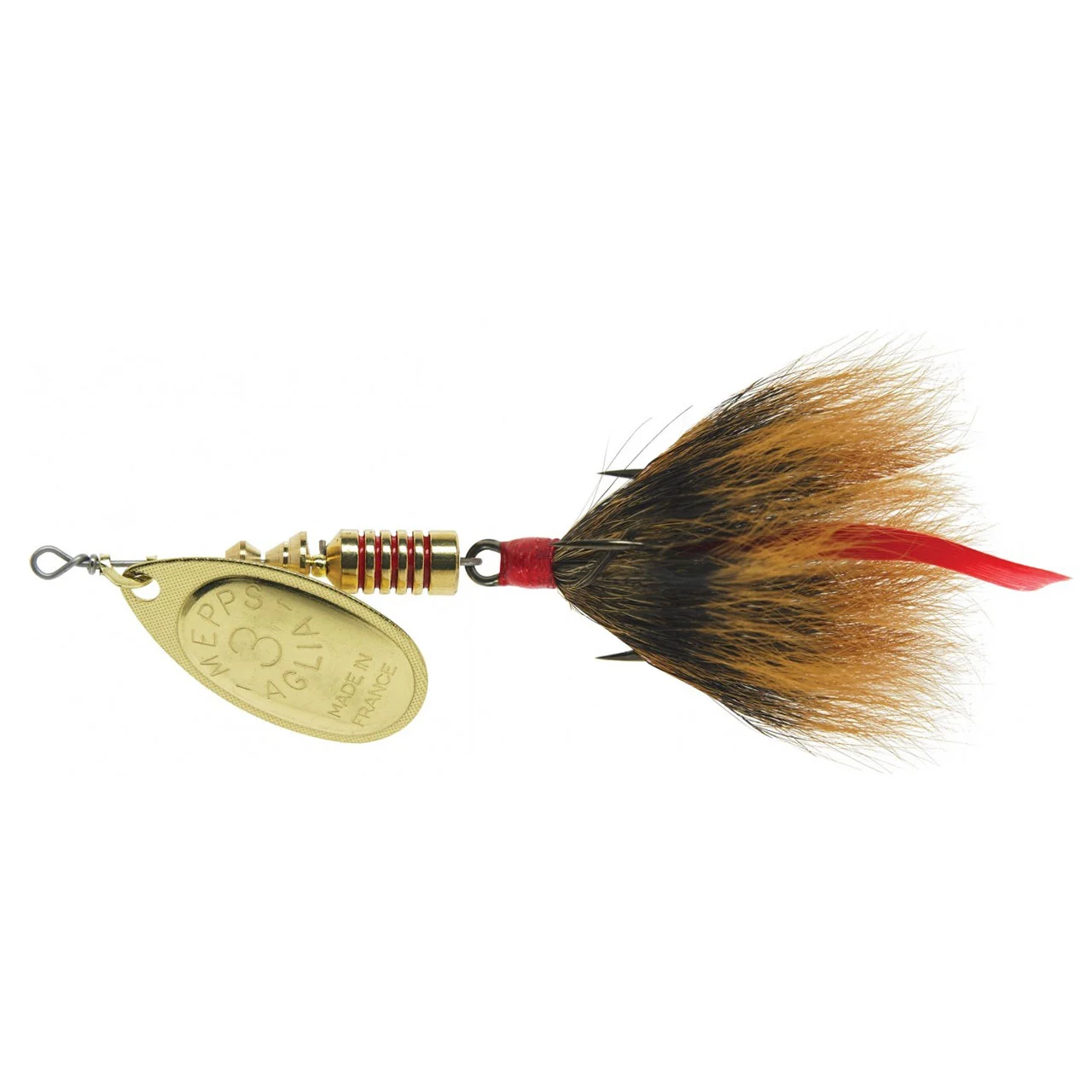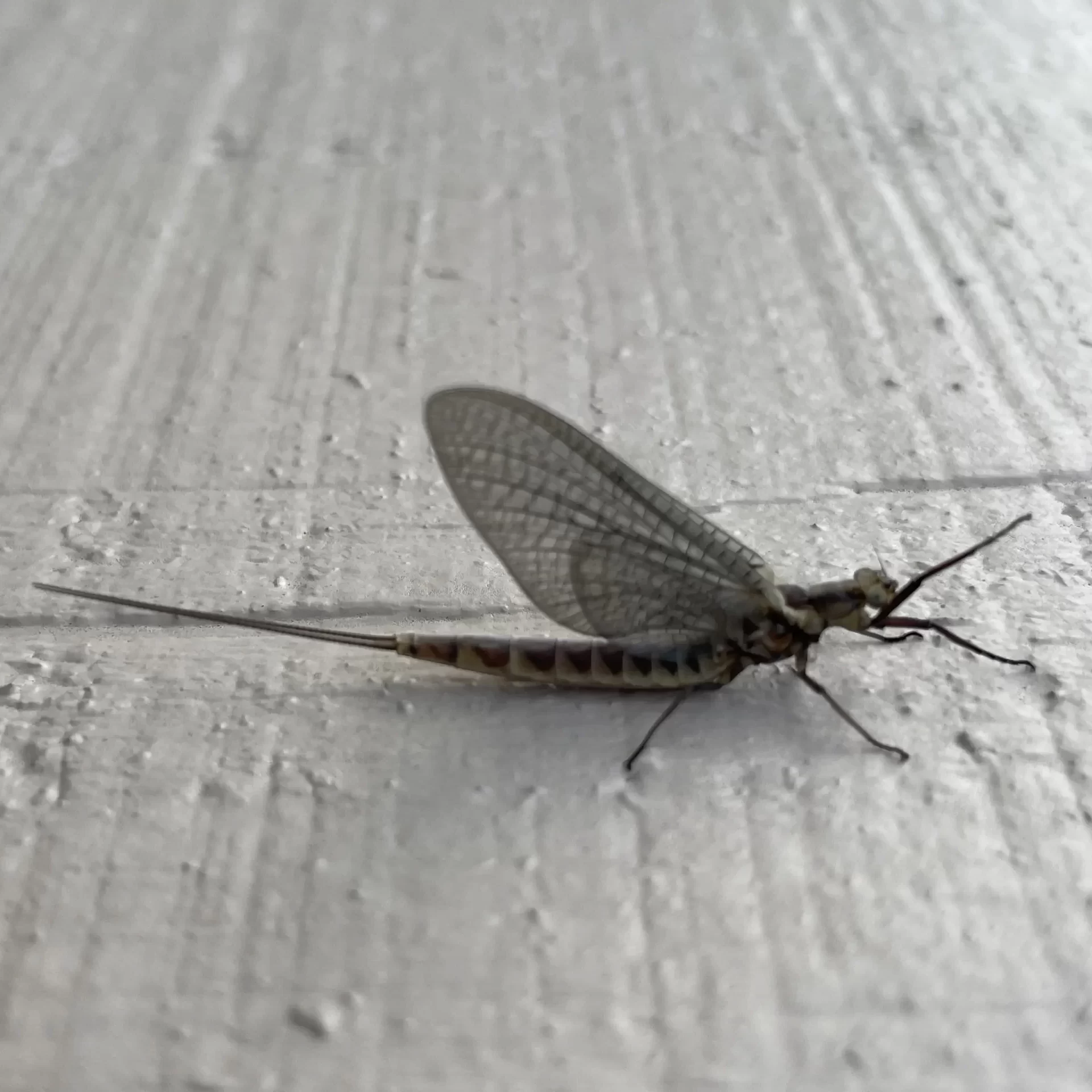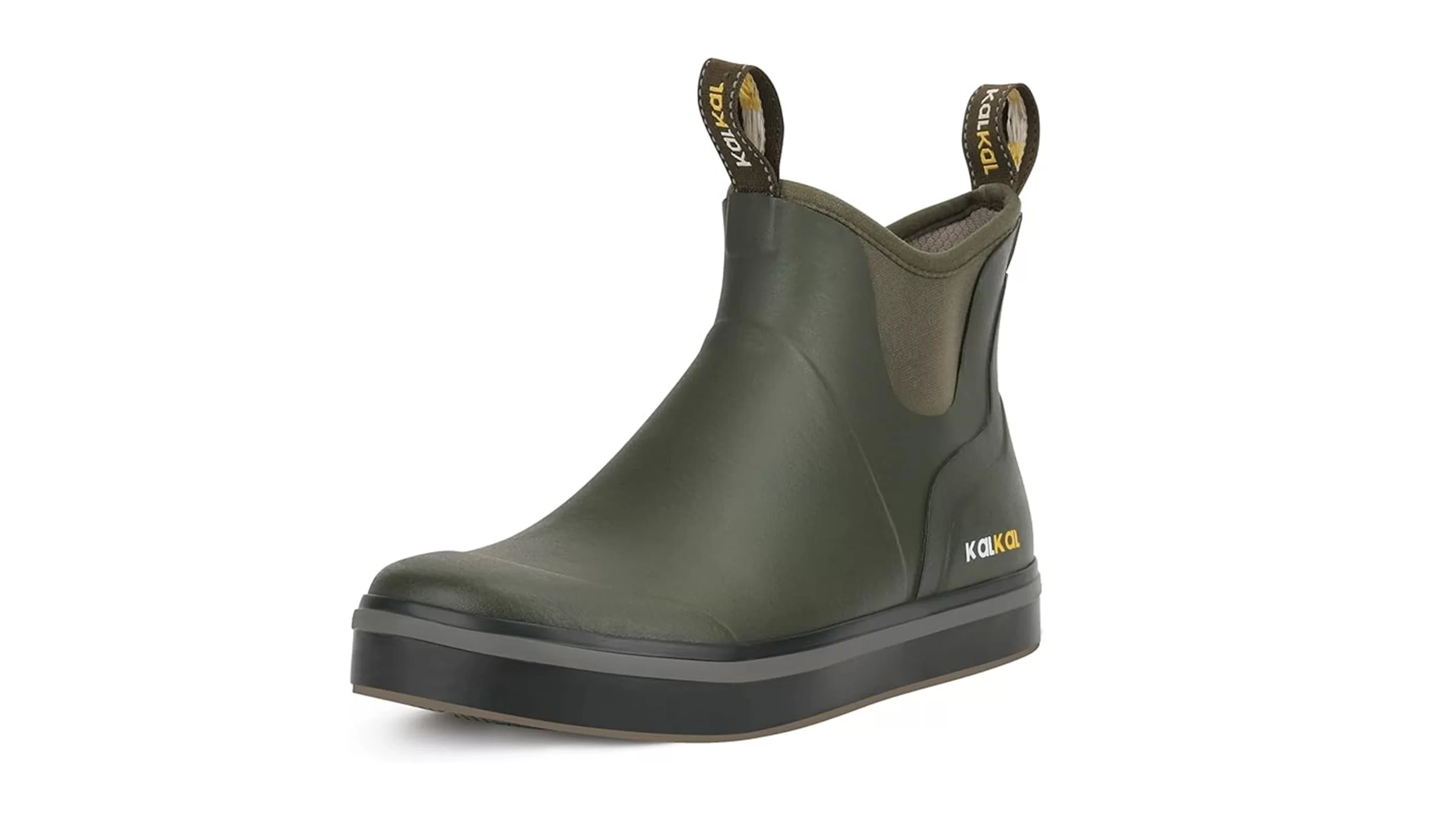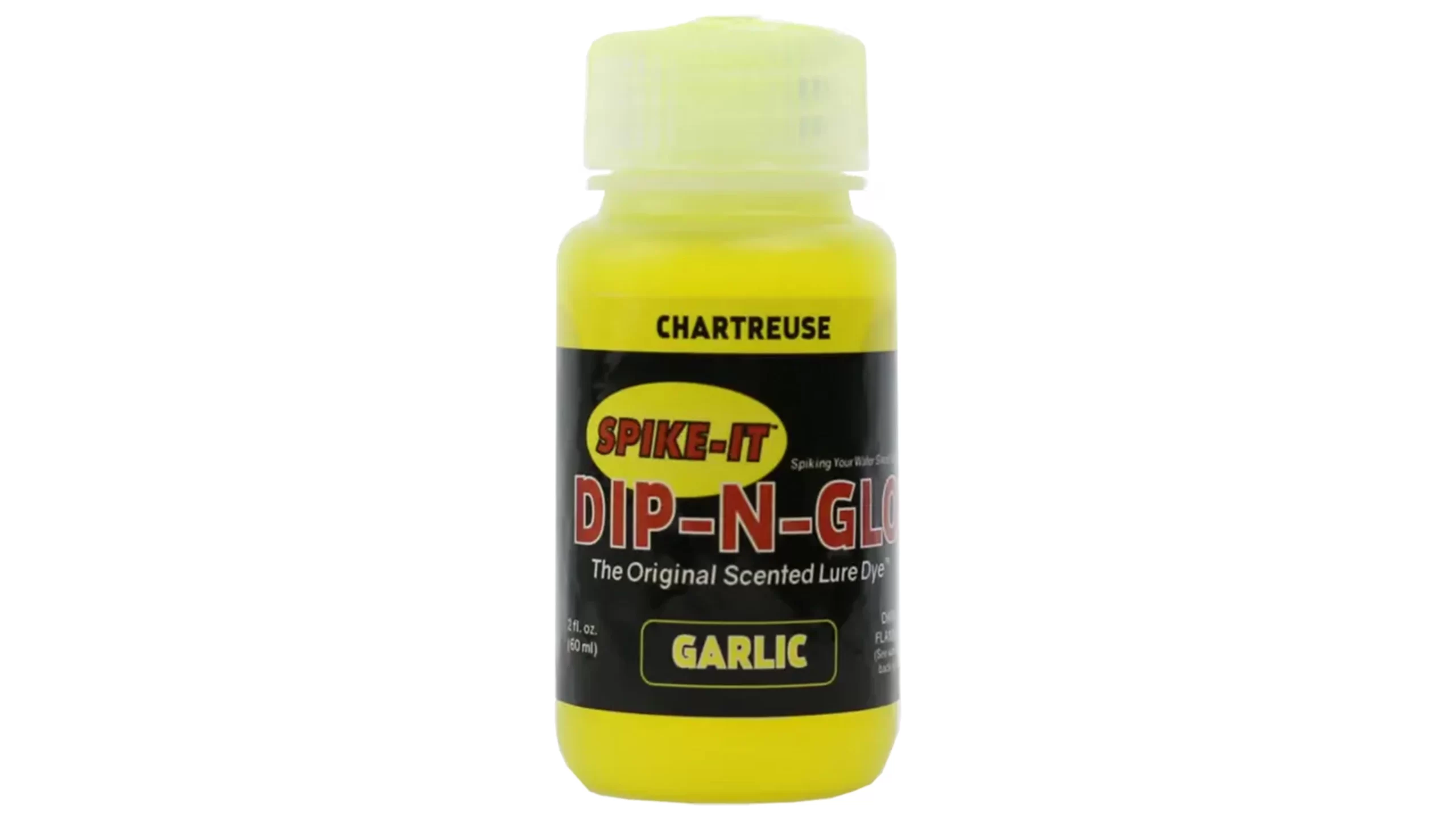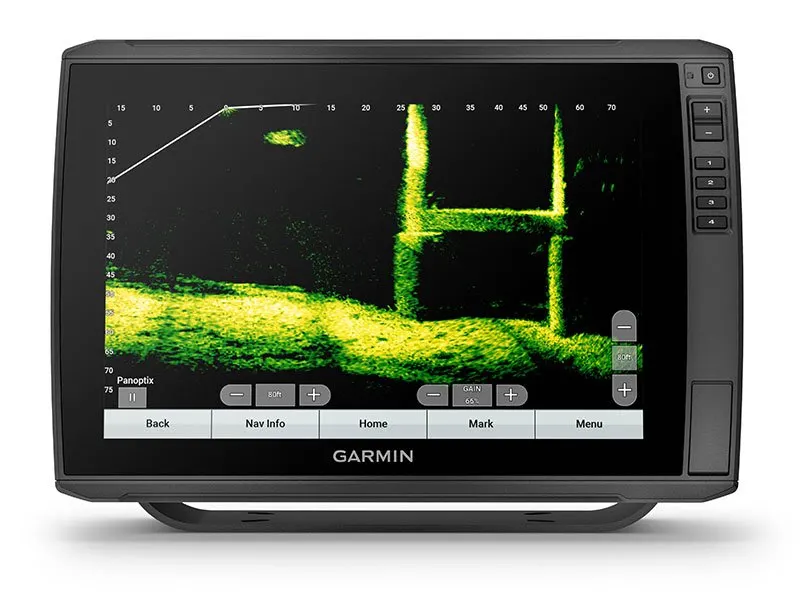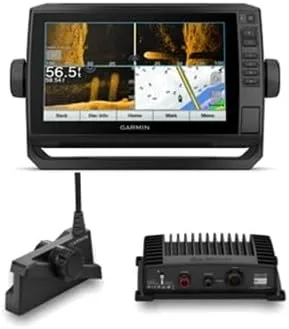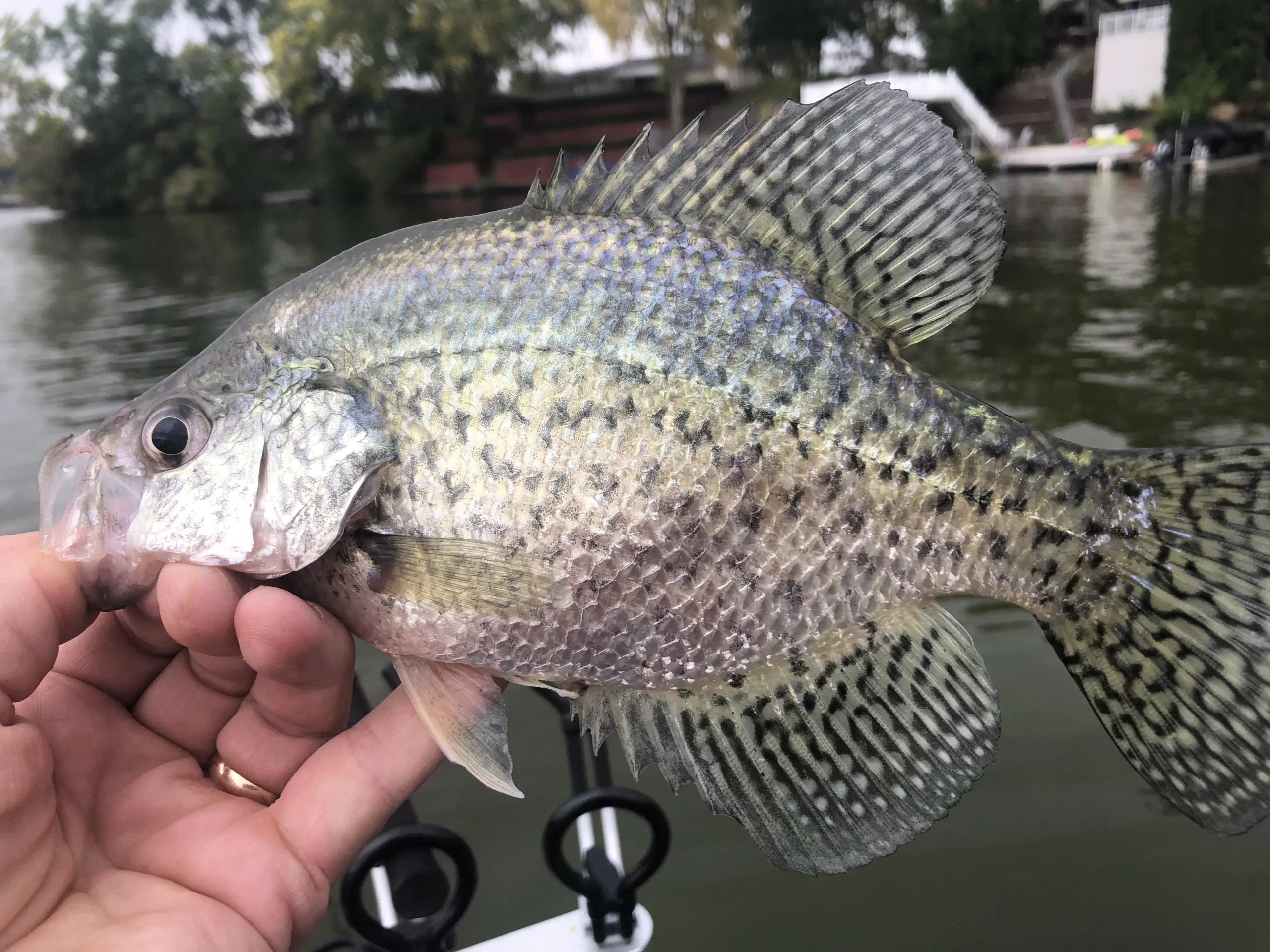When & How to Use High-Vis Line
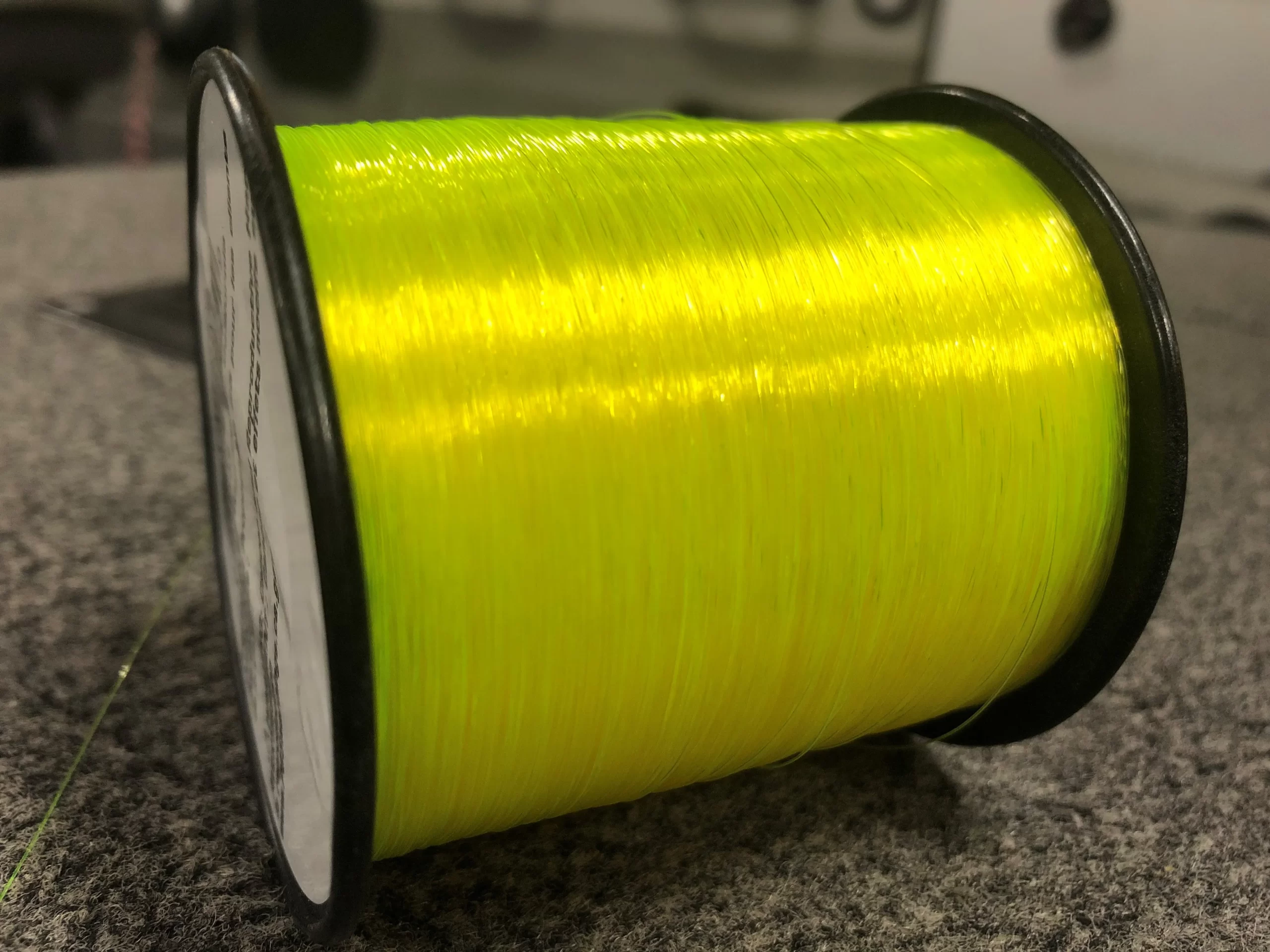
* This page contains affiliate links. The Great Lakes Fisherman may earn a commission on items purchased through these links. For more on this, please click here.
Have you ever wondered how often you missed a fish that took the bait but you never knew it was there? For every fish you detect, you wonder how many more you could have caught, if only you knew. While you will never know for certain how many of these opportunites were there, there is a way to lower the number of fish you miss. And that is by harnessing the magic of high-vis line.
Putting Eyes on the Situation
High-vis line has improved my catch rate tremendously. Possibly by as much as 50% or more for certain types of fishing. High-vis line gives you the sense of sight that was virtually non-existent prior to its arrival. Traditional clear monofilament lines are difficult to see and if a fish is hitting lightly or if their momentum causes the line to go slack, you will not detect this via feel alone. Being able to see what the line is doing adds to your ability to set the hook before the fish spits it. This is important becuase the window of opportunity is often short and must be timed accordingly.
What About Line-Shy Fish?
There may be some concern about the fish becoming line-shy. This is particularly true in the ultra clear waters which dominate the Great Lakes Region. To remedy this, simply tie on a couple of feet of flourocarbon leader. I have found that this eliminates any apprehension a fish may have. It takes a few extra minutes to tie on the leader, but trust me when I say that it’s worth it!
When to Use High-Vis Line
I like use high-vis line in any situation where I am holding the rod while fishing. Jigs, plastics, and jerkbaits all benefit from the use of high-vis. Bass, walleye, and crappie are 3 species where I highly recommend its use.
When Not to Use High-Vis Line
There are times when high-vis line isn’t really helpful. This includes any time that you are not focused on a single fishing rod, such as when trolling with a multi-rod setup.
In addition, when the line isn’t the direct link between you and the bait, such as when using bobbers, bottom bouncers, etc., high-vis line is not necessary. Here, any twitch of the line will not be seen becuase you are not looking at the line segment that is attached to the bait. Any change of tension in that segment doesn’t always visibly translate to the segment of line that goes to the rod tip.
How to Use High-Vis Line
So the way I have learned to use high-vis line is to allow the line to bow a bit once I have cast the bait out. When fishing on the bottom, this can be done by simply lowering the rod tip to allow for just a small amount of slack. When swimming a bait back, I allow the wind (if present) to put a small bow in the line. You can control this by raising or lowering your rod tip accordingly. By having this bow in your line you are giving yourself the best opportunity to see a twitch when a fish hits.
Hopefully you have found this info helpful and give high-vis line a try. Once you try it and you discover for yourself how many hits you’ve been missing, you’ll never want to fish without it.
Spring Fishing Opportunities
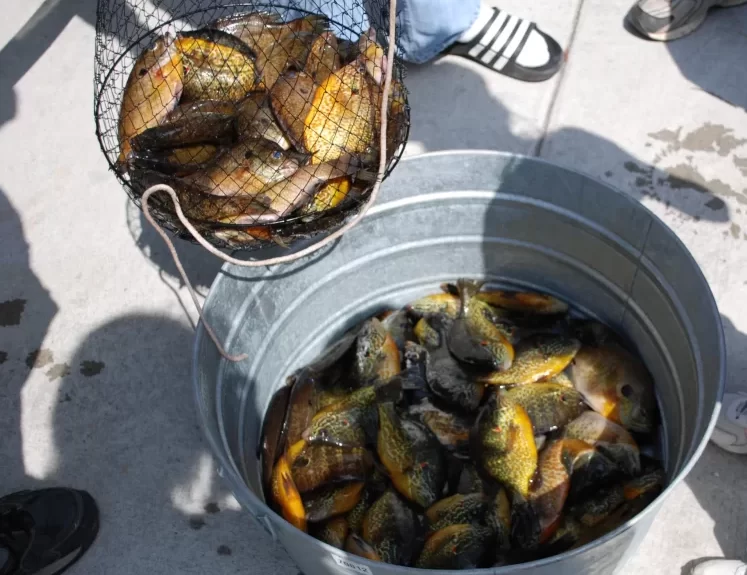
* This page contains affiliate links. The Great Lakes Fisherman may earn a commission on items purchased through these links. For more on this, please click here.
Spring is on the way and that means gearing up and planning for one of the most productive times of the year to fish the Great Lakes region. Fish of nearly every species become easier to catch this time of year. There are many reasons for this, but a couple of them are major factors.
First, after the cold water environment that they lived in through the winter, the fish’s bodies are depleted of energy and nutrients. As their metabolism ramps up, so does their appetite. Because food is concentrated this time of year, so are the fish and they tend to be more aggressive due to their hunger.
Second, spring is the time when many species of fish spawn. This is true for bass, walleye, steelhead, perch, crappie and bluegill. Spawning means that there are a lot of fish concentrated in relatively small areas which increases success rate dramatically.
That said, here are some of the most popular fish to catch in the region during this time.
Steelhead
Spring fishing often kicks off for many in the region with the pursuit of river steelhead. Some steelhead are present in rivers throughout the winter, but as the water begins to warm in early spring, loads more run upstream to begin spawning. Although the streams can get crowded with anglers in some of the more popular locations, with countless miles of streams in the region, there is room for anyone looking for these “silver bullets” to find a place to fish.
Perch
As the ice comes off of the lakes and the water begins to warm, perch also get more aggressive. March through May can be good times to target them as their metabolism ramps up and they begin to gorge on food. While minnows are always a popular choice for perch, don’t overlook alternatives. Wigglers (mayfly larvae) are prevelant in the water this time of year and are a favorite of perch!
Walleye
Probably the biggest attraction to the Great Lakes fishery, the spring walleye runs here are the things of legend. Walleye begin their spawning rituals when the water temps reach the mid-40’s. Depending on the year, this can happen as early as mid-March, but April-May is typically when the run hits its peak, depending on location and water temp.
During this time, walleye fisherman from all over the country flock to the Great Lake’s major rivers to get a piece of the action. On a Saturday trip last spring on the Detroit River, we waited idling in line for over 2 hours at the boat ramps to get off of the water. There was a line of boats nearly a half-mile long waiting to get trailer their boats after a morning of fishing. Of course, a weekday trip will reduce the liklihood of a long wait.
As always, be sure to check your local regulations while planning your trip as many rivers, especially smaller tributaries, are closed to walleye fishing during the spawning season.
Salmon & Brown Trout
Although salmon and brown trout are not spawning during the spring, many of them do move into shallower water to take advantage of the smorgasboard of baitfish that congregate in the warming, nearshore waters of the Great Lakes. This makes them accessible to both small boat anglers as well as beach and pier fishermen.
Trolling along shallow water beaches is one very productive method, especially when spreading the offerings out with planer boards. One place to concentrate your efforts would be anywhere that warm water is found. This could be the mouth of a tribuary or near a power plant discharge.
For shore fishermen, the pierheads at rivermouths are popular locations. They are often lined with spring anglers casting spoons and/or spawn bags.The beaches around these pierheads are also popular places.
Crappie
In many parts of the country, especially in the south, crappie are the main attraction in the spring. As they move into the shallows to spawn, they become easy targets for shore fisherman and boat fisherman alike. They tend to be concentrated, so once you find them, you can usually catch a bunch from that same location.
Crappie spawn when the water temps rise to the upper 50’s. For the Great Lakes, this usually doesn’t happen until May or even June. That said, some of the region’s inland lakes will warm much faster, so you will need to tune into the conditions on each body of water to get the best prediction on when the spawn starts.
Bluegill
Last, but certainly not least, is spring panfish. As the water warms in shallow weedy areas of the region, bluegill and other panfish will begin to move into the shallows to take advantage of food. As insects become active, bluegill will begin to hit the surface. As the water reaches the 70’s, many will begin making beds for spawning. While a bobber and worm are the most popular way to catch bluegill, these fish can be even more fun to catch on a fly rod or a fly setup made for a spinning reel. Popular flies are poppers or rubber spiders.
Top 5 Lures for Fishing Freshwater
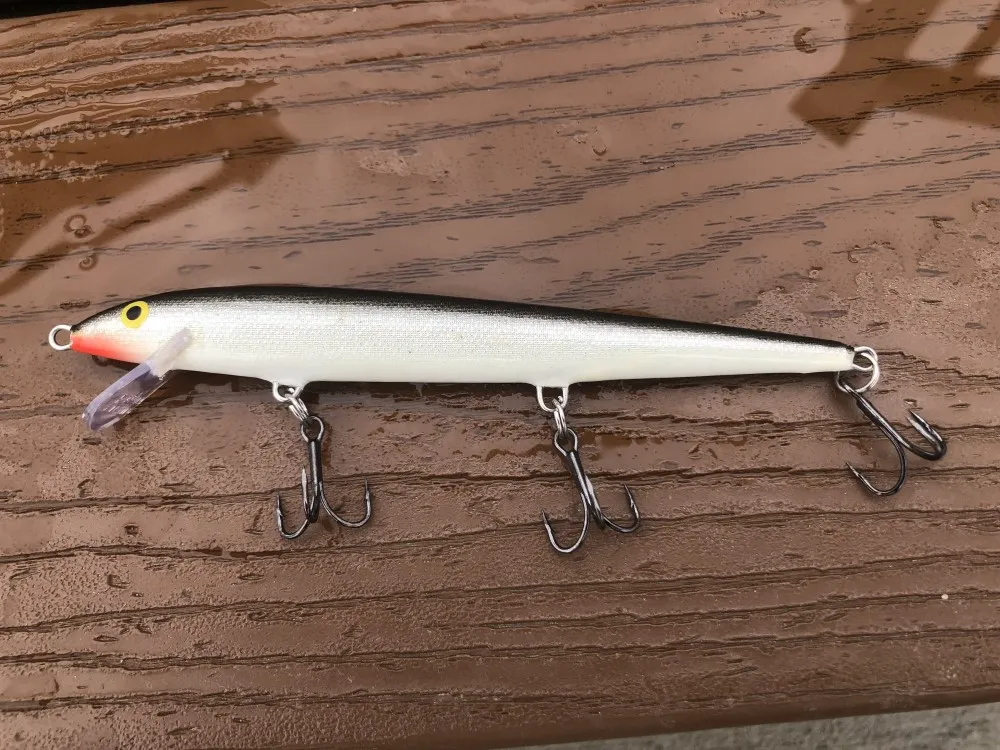
* This page contains affiliate links. The Great Lakes Fisherman may earn a commission on items purchased through these links. For more on this, please click here.
Who doesn’t have a favorite fishing lure? We all have that one bait that we make sure we always have in our tackle box on fishing trip. It is the bait that seems to always catch fish when nothing else will. For those veteran fisherman out there, we know that almost every lure has its time and place. Some just have more of them than others. Nonetheless, there are a handful that are standouts and that can produce in a large variety of situations and locations. These are the lures that have stood the test of time and that do the best at attracting a fish’s attention. Here we will take a quick look at our top 5 lures for freshwater fishing.
Before we start, we must clarify that these are artificial lures only. Anything requiring live bait as a integral part of the presentation is not included. For example, a night crawler harness becomes much less effective without a live crawler. As a result, it doesn’t qualify for this list. That said, let’s get into it!
5. Flies
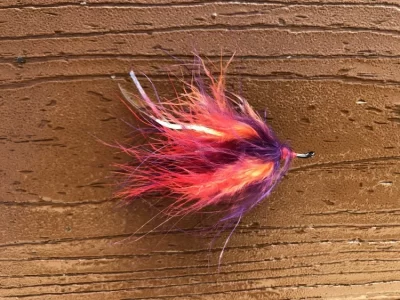
Fly fishing is a popular sport in the Great Lakes region. There are hundreds of tributary streams, creeks and ponds that host a variety of species that rely heavily on inspect species that can be fooled by a well-tied (or in some cases, not so well-tied) flies.
In addition to inspect patterns, well-presented crayfish and wetfly patterns will take species such as smallmouth bass in many of these same lakes and streams.
Trolling flies are a very popular bait when targeting salmon and trout in the open waters of the big lakes. When fished behind a dodger, these can be one of the most productive presentations for salmon at certain times of the year.
4. Trolling Spoons
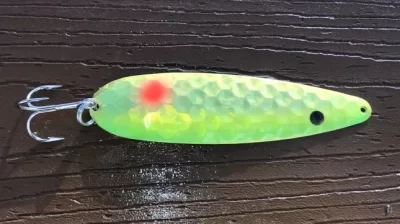
Trolling spoons are probably the most used open water lure in the Great Lakes. They are used for targeting salmon, trout and walleye but catch a whole host of other fish along the way.
The fluttery motion of a reflective spoon in the clear Midwest waters mimic all sorts of forage that the bigger game species can’t resist. That same fluttery motion also makes spoons more visible in deeper water, giving them an advantage over many other lures that simply won’t show up in those dark conditions.
3. Spinners
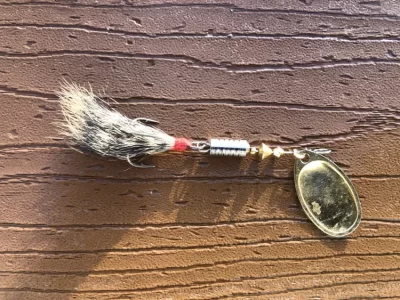
This covers all spinners, including inline spinners such as a Mepp’s for trout or pike, bucktails for muskies or spinner-jig combos like spinner-baits for bass.
Our personal favorite and one of the most versatile lures out there is the Beetle-Spin. These are fantastic baits for locating fish, especially on new bodies of water.
2. Original Floating Rapala
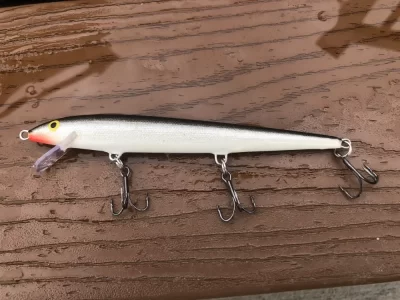
If you know nothing about fishing or are trying a brand new body of water, this is probably your go-to lure. Most people have an original floating Rapala in their tackle box. It is easy to see why. The bait imitates your basic bait fish in a whole host of conditions. The black-white contrast will show up in all but the most turbid of waters and the fluttery action of their movement is enough to drive any fish crazy. This bait appeals so well to a fish’s predatory instincts that is has been known to catch fish half of it’s size and less. It is also a great trolling lure for the region’s most popular gamefish, the walleye. They are particularly productive in low-light conditions when contrast becomes important (for more on this, see our article on Lure Color Selection).
1. Jig
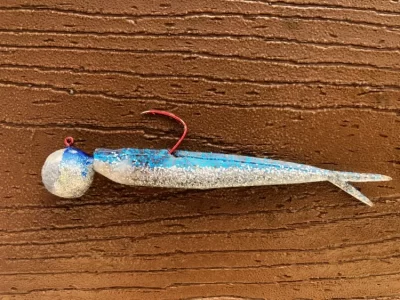
The most versatile and deadly fishing lure to have in the arsenal, in our opinion, is the jig. This bait can be used to fish all levels of the water column. They come in nearly every color combination in the rainbow and they can be paired with plastics and retrieved to mimic nearly any variety of forage. There is almost no fish anywhere that won’t respond to a jig when presented with the right size, color, and retrieval. While a jig may not seem very special to a novice, an experienced fisherman can attest to their productivity when fished properly.
Disagree with our list? Drop a comment below and let us know what your best-producing lure is in freshwater.

